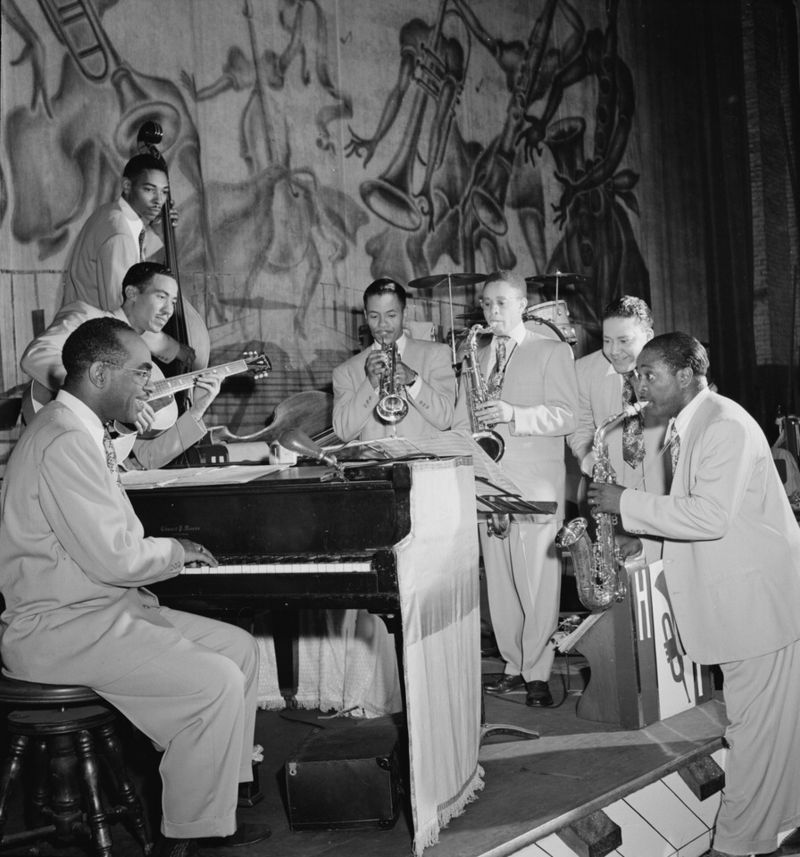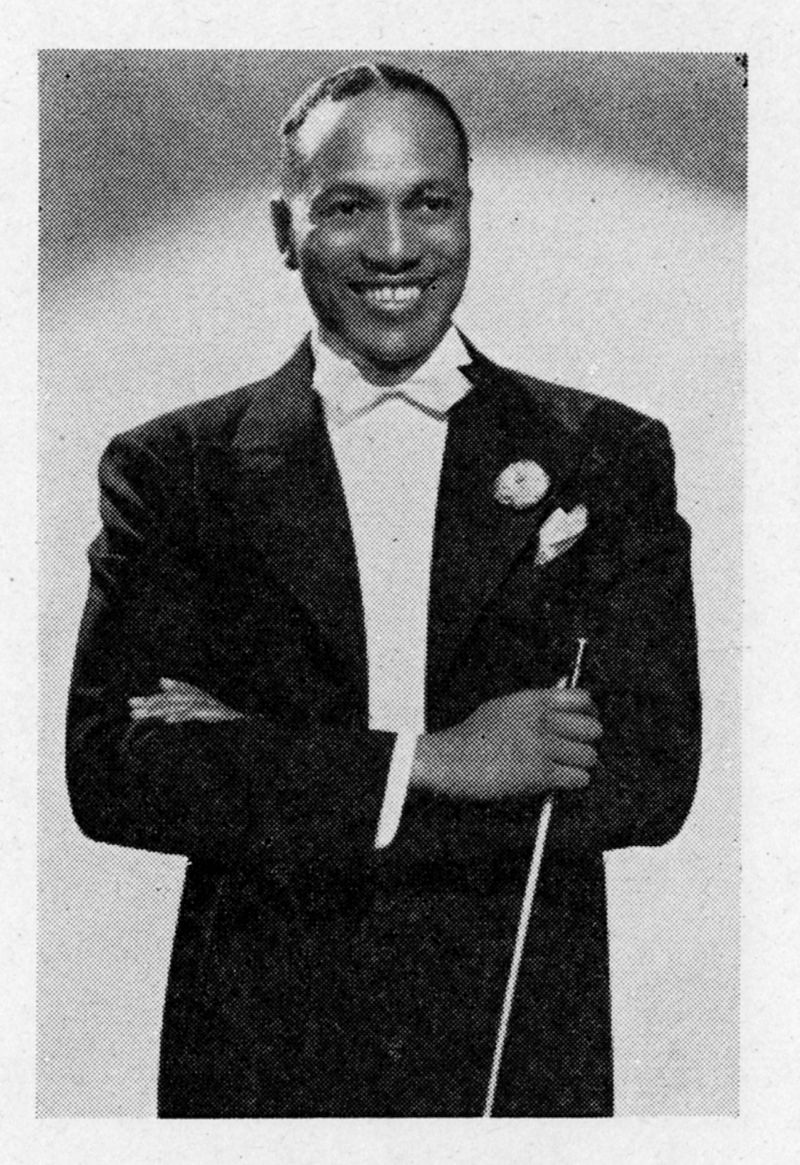
Rhythm and Blues
Rhythm and blues as a distinct music style during the 1970s through 2000 is not the same as rhythm and blues during the 1940s through 1960s. During the 1940s to 1960s, rhythm and blues utilized musical and lyrical practices at least partially based on the twelve-bar blues form/progression.
Rhythm and blues and its subgenres were oriented towards social dancing at either fast or slow tempos and featured a rhythm section consisting of drums, acoustic/upright bass, piano, or guitar. The guitar was invariably electric and along with the piano, and, typically, a tenor saxophone was used for instrumental solos and responses to the lead singer's call. When played in the style of big band jazz, it had swing and boogie-woogie rhythms and gospel-like vocal tendencies. Moreover, as presented in Lesson 19, rhythm and blues included the distinct categories of club blues and jazz, jump blues (boogie-woogie), bar band blues (Chicago/electric), and doo wop.
During the 1970s to early 2000s, music labeled "rhythm and blues" did not share those characteristics, with the exception of gospel-like vocal tendencies. Instead, the instrumentation varied, such as a four-piece rhythm section (piano, guitar, bass, and drums) with a combination three or four brass and woodwind instruments. It rarely used the twelve-bar progression, and never used the boogie-woogie rhythm. During this time, Hot Soul, Hot Black, and Hot R & B were terms used as substitutes for Rhythm and Blues in the charts. Secondary charts, such as Adult Contemporary, Hot Adult Contemporary, and the aforementioned Urban Contemporary, are considered crossover chartsA general market/consumer-driven chart of various American music styles..
In both of these eras-the 1940s to 1960s and the 1970s to 2000-the term "rhythm and blues" was a market-driven category, much like the term "race records" was before 1949. Indeed, the race records category, used from the 1920s to 1940s by professional trade journals such as Billboard and advertisements from record labels such as Paramount Records and Emerson Phonograph Company, encompassed Black-sounding music regardless of their distinct stylistic tendencies. These charts and advertisements promoted blues, jazz, and gospel. Moreover, in 1942 Billboard began applying "Harlem Hit Parade" to chart Black-sounding music popular among African Americans in Harlem, New York. Numbers such as " Take it And Git " (1942) by Andy Kirk and His Twelve Clouds of Joy and " Stormy Monday Blues " (1942) by Earl Hines and His Orchestra, featuring Billy Eckstine, represented most of the popular music at the time.
These songs represent a distinct music style, namely big band jazz/swing, and should be labeled as such. Nevertheless, the title Harlem Hit Parade, like race records, was used to signify music created by African Americans for African Americans. By 1945 Juke Box Race Records replaced the Harlem Hit Parade chart. In 1946, many recordings under this chart name experienced several weeks of popularity, for instance, " The Honeydripper" by Joe Liggins and His Honeydrippers, " Choo Choo Ch' Boogie " by Louis Jordan and His Tympany Five, " The Gypsy " by The Ink Spots, and " Stone Cold Dead in the Market " by Ella Fitzgerald and Louis Jordan and His Tympany Five. These hits have significant stylistic differences. Listen to the contrast between the boogie-woogie rhythm in "The Honeydrippers" (a small band featuring the saxophone) and " Choo Choo Ch' Boogie ," which defines the boogie-woogie type of rhythm and blues. In " The Gypsy," you can hear the doo-wop style in the three/four-part harmonyThe existence of three or four separate pitches sung or played. However, this instance refers to voices. by male singers, a tenor voice singing the lead with minimal instrumental accompaniment. The Jamaican style of " Stone Cold Dead in the Market " represents the urban approach to rhythm and blues. The fact that DJs grouped all the songs mentioned above under the Juke Box Race Records chart clearly illustrates that the guiding principle was the notion of being Black-sounding instead of their stylistic distinction.








